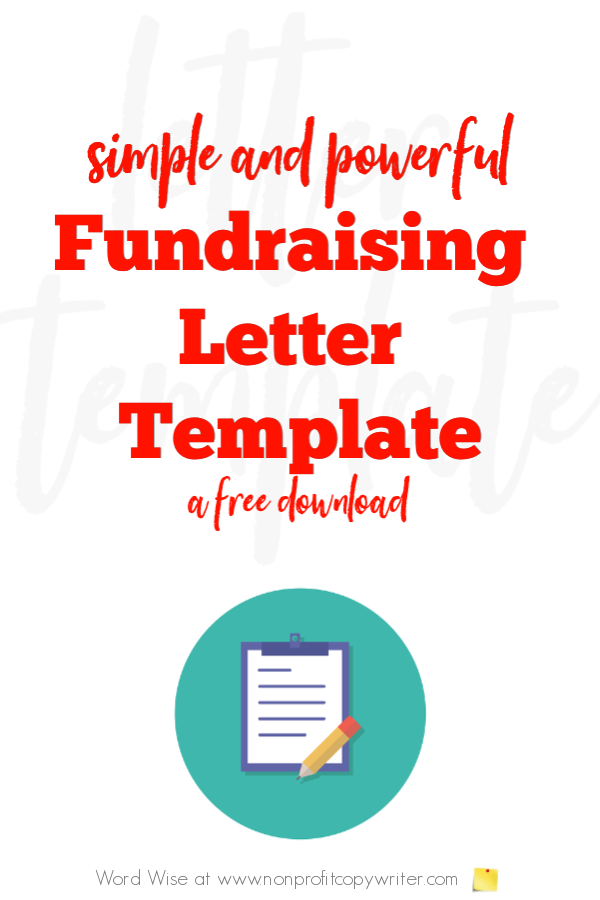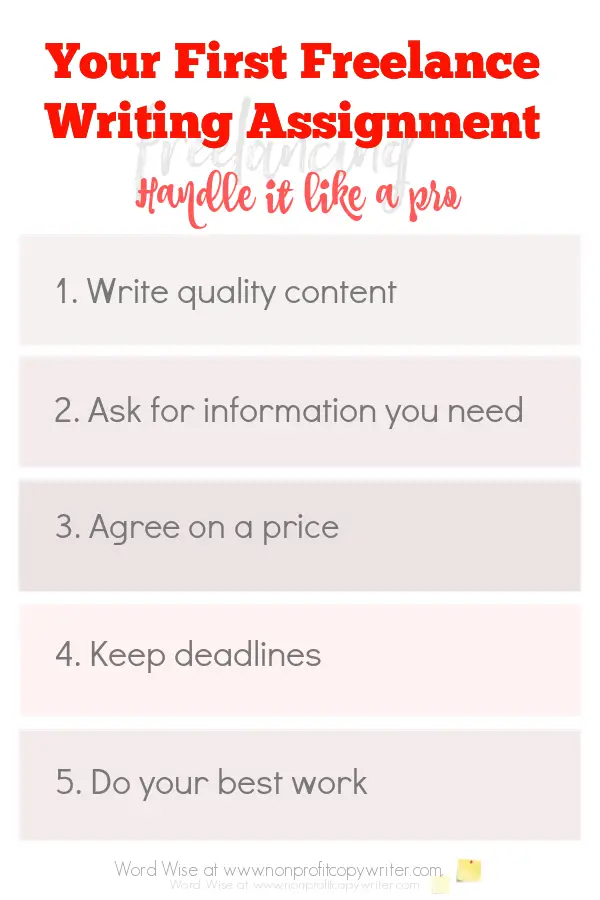Save Time: Get 5 Simple Writing Tips
you can put to use in 10 minutes
Getting Started with Freelance Writing for Nonprofits
Award-winning writer Kathy Widenhouse has helped hundreds of nonprofits and writers produce successful content , with 750K+ views for her writing tutorials. She is the author of 9 books. See more of Kathy’s content here.
Updated 1.7.26
If you’re a freelance writer (or want to be one), then don’t miss an enormous opportunity to acquire paying clients: writing for nonprofits.
There are between 1.5 and 1.8 million nonprofit organizations registered in the U.S. alone, including public charities, private foundations, chambers of commerce, fraternal organizations, and civic leagues. Together, these agencies contribute an estimated $1.05 trillion to the U.S. economy in a year. That doesn’t scratch the surface when it comes to counting all the thousands of NGOs operating elsewhere in the world.
My point? A whole lot of leaders and organizations are working hard to do good. And most of them need help. They’re waiting for someone to come alongside them and say, “I love your work. And I want to write for you.”
But wait. Can you make money by writing for nonprofits? Yes. I’ve done so for two decades.
Why nonprofits need freelance writers
The word “nonprofit” can be misleading. While a nonprofit’s mission is not to make money (as is the goal of a for-profit biz), nevertheless a nonprofit’s staff must be paid and its lights must be kept on. Nonprofit organizations (and non-government organizations, or NGOs) have income and expenses. In that sense, they operate as businesses. Plenty of them have budgets for marketing, which means they can pay for content writing.
And every business needs written content in place in order to stay solvent. Nonprofits are no exception. They have advertising and communications budgets, just like for-profit businesses do. In fact, nonprofits may offer even more opportunities for freelance writers than commercial enterprises because they have unique needs that for-profit businesses don’t.
Why would they hire a freelancer?
- Because they don’t have the budget to hire a full-time content creator … but they can pay for a contract worker.
- Because you reach out to them and offer your services, and these leaders jump at the opportunity to take one thing off their plates.
- Because you offer them a freebie that helps them solve a problem — and in that valuable piece of content, they come to see that you understand their challenges.
- Because you offer help. And they embrace those who want to support their cause.
But in order to hire you, they need to know you are available.
Getting started writing for nonprofits, stage 1: introduce yourself
There are two stages to getting started in freelance writing for nonprofits. First, you need to make them aware that you can provide content for them. And second, you need to successfully work with them so they hire you again and again — and you become an integral part of their team.
What do you do to get that first assignment? Introduce yourself.
1. Make contact
Nonprofit leaders are swamped. Most of them wear multiple hats as executives, administrators, fundraisers, negotiators, service providers, chauffeurs, webmasters, hospitality managers — even janitors. And most don’t spend hours surfing online, trying to find freelance writers to help. They don’t have time. Which means breaking into this market is up to you.
Look at it from the nonprofit leader’s point of view. If you were in that position — and a writer reached out to you with the intent of making your life easier by taking writing off your plate — you’d want to learn more, wouldn’t you? Of course.
To get started prospecting, take these steps.
- Choose a niche. Maybe you’re interested in providing support for animal shelters … homelessness services …. charter schools … Alzheimer’s research. Start with a cause that interests you or that you already support.
- Assemble your clips. Prospective clients need to know that you can write. Post your writing samples on a web page or blog. You don’t need to have many — simply choose the ones that reflect your best writing.
- Create a list of prospects. To get started, find out what organizations are operating in your niche. In the U.S., check charity clearinghouses (like Candid and Charity Navigator) and associations (type “association for + [your area of interest]”). You will be surprised at the hundreds of organizations — big and small — operating in your niche.
- Create a letter or email that introduces yourself. A letter helps you cut through the noise and speak directly to the person who will hire you. If you’re worried about “selling yourself,” don’t hit the panic button just yet. You can use a prospecting letter template and personalize it. And by all means, customize each letter you send by including the name of the individual in charge of communications. “Dear Sir” just won’t cut it when you’re trying to make a connection to offer your services.
- Use mail, email, phone — or all three. Keep a record of who you mail to and who you talk with. And yes, I said “mail,” as in print. Think of how many actual letters you get these days. If you receive one that’s individually addressed with a stamp on it, do you open it? Yes, me too. Email? Less so, unless there’s an enticing subject line.
- Include an offer for a freebie. Why? Because nonprofit leaders need resources and help. By offering a freebie, you show that you understand what they need and that you care about their cause. But a word of caution: make sure your report has value for your target client. For instance, if you’re focusing on pet rescue, offer a free report titled, “5 Ways Your Animal Shelter Can Get More Volunteers Fast.”
- Track and respond to those nonprofit leaders who download your document or return the response card to request the report. To do that, you need to …
2. Follow up
Now that you’ve started sending inquiries, you’re getting responses. Nonprofit leaders request your freebie. In some instances, a prospect may reach out to you right away to ask about your content writing services.
But in most cases, you need to take the initiative and follow up. Quite simply, it’s because nonprofit leaders are b-u-s-y. That doesn’t mean they don’t want to work with you or don’t want your services. It means they are consumed with crises that arise. They are meeting with donors. They are hiring or onboarding staff and volunteers. Teen organizations are working with a youth who has attempted suicide and relief agencies are contacting the local water authority to get a well dug. In the rush to do all that must be done, these leaders may not follow up with your phone calls or emails.
Take the responsibility to do so. As you follow up, do so with a good dose of persistence coupled with realistic expectations.
- Don’t expect a high rate of return from your prospecting. A 2–4% response is excellent. If you reach out to 100 nonprofits, plan to connect with 2 to 4 of them.
- Don’t expect a quick response. Mail piles up on desks and email boxes get full while nonprofit staffers do their wonderful work.
- Don’t fret about the competition. Plenty of writers bypass the nonprofit realm because they lack patience or mistakenly believe they’ll be required to write for free.
- Do have confidence in the writing skills you’ve acquired. If a client asks, “Have you written a newsletter?” you can respond with “Yes, I’ve produced one every week for a year” (even if it’s your own) or “I’ve had articles printed in three publications.” Content writing skills transfer across for-profit and non-profit genres. If you don’t have a specific skill — say grant writing — then take a course and learn.
Getting started writing for nonprofits, stage 2: your first assignment
You’ve connected with a nonprofit leader. She has expressed interest in using you to write an appeal letter or a series of blog posts. Now, what?
1. Write quality content
- Pin down clear expectations. As with any other work-for-hire arrangement, make sure you understand the scope of the project and the deliverables that the client expects. Follow up your conversation with an email: “As we discussed, I will write three (3) 1,000-word blog posts, each about a different northern stream chemical contaminant and its impact on local wildlife. First drafts will be delivered by Wednesday at 5 PM. I’ll offer two rounds of revisions, which I can turn around within 48 hours.”
- Ask for the information you need. Your client should have statistics, stories, and expert quotes to provide about the agency’s cause. If she doesn’t, then offer to do some research or interviews for an added fee. You can also ask for past blog posts, articles, promotions, and identity content to ensure your messaging and language are consistent with the agency’s. Extra tip: ask for the information you need all at once, rather than in multiple emails or phone calls. You’ll save the client time.
- Agree on a price. Often, I charge less than usual for the first assignment. While plenty of writers balk at this, I do so for a clear reason: nonprofits have limited budgets and can’t afford to “make a mistake.” Fear can keep them from hiring me. I explain that the one-time discount allows them to test drive using a freelance writer (if they’ve not done so before) or me (if they’ve had a bad experience with a freelancer in the past.)
- Keep deadlines. If you promise you’ll have the letter draft in the client’s inbox by Monday at noon, make sure you deliver. Better yet, send it by 9 AM Monday. Nonprofits rarely work with providers or beneficiaries that meet or exceed expectations. Doing so helps cultivate that second assignment.
- Do your best work. You’ve been given the chance to help a cause you believe in and make money at the same time. Take advantage of the opportunity.

Write a winning fundraising letter using this template.
2. Ask how you can help further
You’ve delivered quality content. The client is pleased, and to be honest, you enjoyed working with her. Wouldn’t it be handy to have regular assignments from this client? Take these steps to do so.
- Ask this question: “What else can I help you with?” You can even add, “I notice you haven’t updated your website (or posted on your blog) in a while. Is that something you’d like help with?” For me, this question has led to more repeat assignments and ongoing work than I can count.
- Ask if you can add the leader to your email list. Perhaps the organization doesn’t have any pressing content needs right now. That’s okay. There will be a time when they need you once more. When you send regular (and helpful) emails, you can stay in touch with this client and others automatically. When the need arises for letters or phone scripts or newsletters, she’ll think of you because you’ve stayed in her inbox with useful information.
- Follow the agency on social media. Comment often.
- Reach out midyear (August or September) to find out if the organization needs help with their year-end campaign.
- Send links, news, and bits of information about the cause to the leader as those tidbits come across your desk or land in your inbox. You’ll show you care about their work and not just getting hired.
- Encourage. These leaders are busy doing wonderful work. By hiring you, they’ve relieved a bit of their burden. Don’t become yet another high-maintenance issue they need to deal with. Instead, be the person in their lives who encourages them and offers gratitude for what they’re contributing to your mutual cause.
Nonprofits need good content writers
When I started freelance writing for nonprofits, I contacted 80 agencies per week. Often, I felt afraid or discouraged. But I took to heart what my husband told me: “These people are helping others, and they need what you’re offering so they can stay on task.”
After a few weeks, I had my first responses and my first assignments. I continued prospecting for a couple of months until I was working full-time. Some of those clients have had me on their payrolls for twenty years.
Writing for nonprofits is a lot like working as a freelancer for any other client. Nonprofits need all kinds of content: web pages, social media, blog posts, newsletters, annual reports, business letters, and presentations — and of course, nonprofits need fundraising letters and email campaigns. Somebody needs to write all that content. Why not you?
More on freelance writing for nonprofits
What is Freelance Writing? FAQs ...
How to Find Beginner Freelance Writing Jobs with Nonprofits ...
Nonprofits Need You to Write These 5 Types of Content ...
Make Money As a Writer When You Specialize and Sub-Specialize ...
Why You Need A Core Message – and How To Write Yours ...
Where to Find Freelance Writing Jobs With Nonprofits ...
Grant Writing for Beginners: Getting Started ...
Strategic planning for nonprofits: what's it all about?
More writing tips for nonprofits on our Pinterest board ...
Return from Getting Started With Freelance Writing for Nonprofits
to Nonprofit Copywriter home
As an Amazon Associate I earn from qualifying purchases.
Share This Page

Named to 2022 Writer's Digest list
BEST GENRE/NICHE WRITING WEBSITE


Stop Wasting Time!
Grab your exclusive FREE guide, "5 Simple Writing Tips You Can Put to Use in 10 Minutes or Less"













